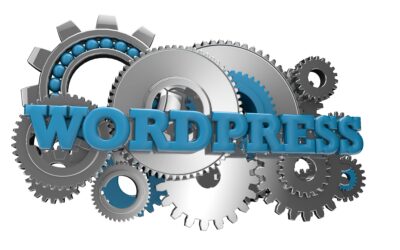In the section above we have mentioned the tools like SEMRush, Ahrefs, Google Keyword planner, MozBar for keyword research. They all are strong tools and give you varying results. Following are the characteristics of good keyword for ecommerce:
-
Decent Search Volume:
This is the first and most significant metric to consider when evaluating any keyword. You are not going to see any benefits for your keyword if no one is searching for it. It is obviously higher the search volume, more interested your target market is in your services and more potential organic traffic that you want for your site. High or low search volume depends. In some businesses or for some products the monthly 150 searches are a lot, for others it is 5k. More you search for keywords, the better idea you will have about the decent keywords meant for you.
Make sure you use the tool that gives you month to month search volume data as some products see seasonal variations in searches.
-
Low Competition:
Lower the competition, more likely you will be with a bit of work to rank. And ultimately you want a good keyword to rank. This metric is called keyword difficulty. It needs PA and DA into account.
In this case long-tail -keywords are valued. The shorter the keyword, more high authority sites will be raking for it. So, longer and more targeted your keyword is, more are the chances for you to rank well. Long-tail keywords are at least three words long (ideally longer); they often contain modifiers or describe the pain points they solve or the benefits they provide. Prospects who search for these keywords are ready for a solution. Granted, you won’t necessarily get a high search volume; but the traffic you do get will be more qualified and more likely to convert.
-
High Buyer Intent:
This is the other metric to rank#1 for a keyword and get a lot of traffic that actually leads to sales. Understanding the searcher’s commercial intent is key: Are they looking to make a purchase or they are visiting your site just for the purpose of getting the information.
To find the commercial intent you can check for the CPC for a given keyword. A high CPC which, again, will be relative means businesses are willing to pay more to advertise around that keyword. And businesses are only willing to pay if there’s an anticipated ROI. In other words, high CPC = high competition = high commercial intent. Naturally, you’ll want to find the “sweet spot” here, given you’re looking for low-competition words as well.
-
High Relevance:
No matter how strong a keyword is, decent Search Volume, low difficulty, high commercial intent, what if it does not clearly describe what you sell, no one is going to buy it. So, relevance is the most important part of keyword research. Do not include anything in your keywords that you do not serve. Make sure you are clear about what your unique selling propositions and value propositions are before you start narrowing down your keyword.
What Are The Best Practices For Ecommerce Keyword Placement?
When you have completed your keyword research and have found the best possible keyword for your online business, the next step is where to place it. The simple answer for your question is everywhere. Your keyword should be sprinkled on your homepage, about us page, and FAQ page. As a part of your content marketing strategy, you should focus on long-tail-keywords while planning the blog post for your site. When we talk about ecommerce websites, then you need to pay full attention to product and product category pages because these pages are the most important ones on your website. It is not just a matter of placing the target keyword everywhere you can. You need a strategic approach.
You need to keep in mind that you have to place your keyword in such a way that you do not suffer from Keyword Stuffing and keyword cannibalization. When multiple pages on your website have the same keyword and rak for that keyword, this situation is termed as Keyword cannibalization. This essentially places them in competition with each other for Google’s attention, which confuses the search engine’s algorithms. Asking Google to prioritize one can lead to a ranking penalty. In other words, you’ll lose credibility for all those pages.
To avoid this problem, you should keep your all keywords in a spreadsheet. So that it becomes easy for you to assign different keywords to different pages. Your broader keywords will go to your category pages, and more specific keywords will go to your product pages. In this way you will be sure that you are using the same keywords on the same pages. Following are some tips to place your primary keyword:
1. Place your keyword in the URLs
Make your URLs keyword-rich and user-friendly. Some ecommerce platforms automatically use product titles as URLs like Zoho’s platform. If you want to change you can go inside and make changes accordingly.
In commerce plus, the URLs are structured as:
- com/product/product name
- com/category/category-name
- com/category-name/sub-category-name
- com/category-name/sub-category-name/product name
These are called absolute URLs, and Google recommends them.
Other best practice for ecommerce URLs is:
- Keep them short: Try to make the URL below 60 characters. According to analysis it is found that short URLs rank Higher than long ones. Your ecommerce site’s URLs will be long because you are using category and sub category. But even try to make it short and to the point. Do not use your entire product title in the url, use what you need and include your target keyword in the url.
- Do not include stop words: Stop words include and, or,a, the and for. These words do not add any value to the URL and do not help users or crawlers to understand the page. So, remove these words from the title when you make the URL from your title.
- Use hyphens between words rather than underscores: Google understands hyphens as word separators. But Treats underscores as wordjoiners. All other special characters, apostrophes, exclamation points, and so on should be deleted. Only use lower-case characters.
2. Place Keywords in your title tags:
Your title tags and meta descriptions are the first impression a user will have of your products or services. Make sure you do not disappoint them. When you make a search about anything the first thing is title tag and meta description from where you get an idea about the site. For instance we have made a quick search on Furniture store. Search result is as below:

The title tag is large for that search. Clickable blue text guides the user into the website. The grey text is the description of the business services. The description also seems large.
Consider the title tag as the headline. No matter how many products your store sells, your title tag should be unique. The best way to write the title is to add your primary keyword and a little bit of detail about your product. You can also include the brand name.
So in short, keep your title tag short, unique, and to the point. Google displays 50-60 characters of title tags. Try to write the title within this limit of characters.
3. Place keywords in your meta description
Meta description should be within 150-160 characters. It should be your target keyword and semantic variations. If you don’t provide Google with a unique meta description, the search engine will automatically generate one using the content it finds on your page. But it’ll be an arbitrary selection; and Google won’t know to tailor the snippet it chooses to your market’s pain points or to user experience. You know best what makes your market tick; so take the time to do this yourself rather than letting Google automate the task.
4. Place keywords in <H> tags
Every page of your ecommerce website should have at least one H1or header tag and your product and category pages are no exception. The page can also have sub headers like h2,h3,h4,h5 or h6. It all depends on how much content is present on the page. Headers and sub headers are important for user experience. It becomes easy to understand the content with the help of headers and sub headers. Of course, your keywords will go in as many <h> tags as you can fit them in.
The product or category name will typically be your H1 tag which means your H1 tag will naturally contain keywords. Your subheadings, on the other hand, will enrich your page with related keywords features, benefits, policies, sizing, and so on contributing to your website’s SEO authority in a meaningful way. REI, for example, uses their H1 tag for their primary keyword (the product title). But they use a different <h> tag further down the page to shout out a product benefit.
5. Place keywords in your product and category page copy
It is not enough to include your keywords in the header tags. It is also essential to put your main keywords in your product and category page copy, and do not limit them to only these things but also include them in the body text.
It is recommended at least 300 words of copy of your category page, and at least 900 words for your product description. Studies show that longer content tends to rank higher. More the content on your pages, the more Google will understand what your page is all about, and assume its good content. Include your primary keyword 2-3 times on category pages and 3-5 times on product pages.
6. Place your keyword in image ALT text
Image optimization is also equally important. While optimizing the images you can include your target keywords or keyword variations in the images alt text. It will help you to increase chances of your product to get more visible on Google image search results.
How To Write Killer Descriptions That Convenience & Convert For Ecommerce SEO?
No matter how visually compelling your product images are, but you do not describe the things in words and support your image’s existence then it is useless. It is not contributing to increasing your sales. Strong product images can attract the customers. But only images can not describe each and every thing about the product. So you need to fill the gap with words.
So the term product description is the most significant part of SEO strategy. Product description needs to qualify its value and communicate why the product is worth purchasing. It needs to sell the product to real people by educating them on the product’s benefits. It needs to explain the pain points it solves, and why it is the best possible solution for your target market.
Below are the best practices to write the product descriptions that sell:
1. Know Your Target Audience
To know your audience you need to know the language of your customers that they use to describe their interests, values, pains, and desired solutions. You need to discover what kind of things they are looking for. You should know how much information your prospects needs in a description.
In brief, once you get who is buying your product, everything else will fall into place. If you think of the product description as a conversation, you’ll do more than ensure your target market feels spoken to. You’ll make your company sound human.
2. Know Your Tone
You will discover your tone when you know whom you are speaking to. while each of your products might have a slightly different target market, there’s a single common denominator and that’s you. Don’t forget that you have a company persona; and it’s your brand. Whether it’s witty, playful, sincere, earnest, nostalgic, enthusiastic, or [insert your adjective here], your company has a voice. Make sure you sound “like you” consistently across your descriptions.
3. Describe Features but Underscore Benefits
As an ecommerce merchant it is natural that you will share the features of your products. You should place your features on the product page. Remember that your target market is not interested in technical aspects of your product. What they need to know is the benefits of the product, how your product reduces pain points or adds pleasures to lives. We’re talking real solutions and tangible life enhancements. What can prospects achieve with your product? How will your offering make them healthier, happier, more at ease, more productive, etc.? In other words: What’s in it for them?
4. Tell a Story
Emotions have a huge impact on buyers behaviour. You can tell a story about how your product solves the pain point. You need not elaborate everything. Tell just the main features of the product in story form. People make the decisions based more on primal parts of the brain. And storytelling stimulates those areas.
5. Appeal to a Prospects’ Imaginations
If you are telling a story you have already started this. Appealing to prospect’s imagination means “setting the scene”. This means you need to tell the story in such a way that the buyer starts imagining how the product will fill the happiness in their lives. They start thinking good things about your product. Research has shown when people hold a product in their hands perceived ownership increases. It’s not in your hands that you can force your customers to buy your product. But you can appeal to their imagination through language.
6. Answer the 5Ws
This is very important to answer the 5Ws. This gives you a chance to not miss anything. This can help you to describe your product fully:
- Who is the product for ? You need to explain the customer persona. Find your target market and potential customers.
- What are the product’s specifications? You can explain the product material, ingredients, dimensions. You can include features, functions, and benefits. What is the color, size, and model of the product? What is the production process? You can also explain care information.
- When would a customer use the product? Is it the product of daily, seasonal, or occasional use? When will the customer receive the product after the order date? Include the shipping details on every product page.
- Where would a customer use the product? Is this the product to use indoor or outdoor? What is it’s compatibility with weather? If it is a beauty product, can the customer use it on face or all over the body? You need to explain all these points depending on your type of product.
- Why would the customer purchase your product? What is special in your product? How is your product the best from other sellers?
7. Preempt Doubts and Objections
Anywhere there might be a transaction, there will be a level of friction. Try your best to minimize this friction. What if the customer did not get what they were hoping for? For that you need to mention your 30 days return policy in your product description. Imagine your customer does not believe that your product works? You can link to a testimonial page or simply add some testimonials on the product page. You can also add reviews on the product page. So that your customers can trust your products.
8. Use Power Words
You’re a consumer; you know what works for you… and you certainly know what doesn’t work. First, ditch both the hyperbole (“revolutionary”) and the oft-used descriptors that don’t mean anything to anyone anymore (“high-quality”). Of course, if your product is revolutionary, justify that claim by offering proof that it is. If it’s not, that’s okay. There are still plenty of power words you can use to sell your product for exactly what it is.
9. Make it Scannable
In this era, humans do not read, they are scanners. We don’t want to wade through blocks of information to get to the stuff that’s pertinent to us. You need to manage your product description according to this fact. It means you should break your details about the product with <h> tags and subheadings. Create a section for specs, a section for product benefits, a section for nutrition information, a section for customer reviews, a section for user-generated content, and a section for FAQs. This allows visitors to jump to precisely the details they want, rather than sifting through content that’s irrelevant to them. It means breaking up the copy in each of those sections with bullet points. It means using bigger fonts for more important information. It means including white space between sections. In short, it means a terrifically clean-looking page.
10. Remove Buyer’s Guilt
Eliminating the buyer’s guilt before a prospect even makes the purchase is a more subtle art. It may be useful to think of all the reasons you have justified the purchase in the past. Then experiment with these strategies:
- Reminding customers what a bargain they are about to get
- Complement them- You should complement them on finding such a great deal, on having such a great taste, on the aspirations they have that your product will support , and many more.
- Reminding them how necessary or even game changing your product is for them.
- Inform them that you product is time-sensitive
- Impress them that your product is exclusive
- Give them a sense that your product will save their money on long run
11. Keep a Consistent Structure Across Product Descriptions
Product description should consist of as much information as is appropriate for your product and target market. It also depends on the type of products. For instance if you have a clothing shop then you need to include its size, color and care information. It seems less information about the product isrequired. But on the other hand if you are selling electronics gadgets then, you need more information to mention in the product description. So it depends on the product type.
12. Know When to Show and When to Tell
Product descriptions are the most crucial part of your product page. It will go to the product videos, social media integrations, customers reviews, and other user-generated content. For the stuff you can describe, you’ll get on the A/B testing train once your product pages are up. You’ll discover what amount of copy visitors want, how far down the product page they scroll, what “product stories” and product copy converts best, and more.
SEO Content That Provides Value & Insight
Content provides value and unique insights It is very helpful to provide unique and valuable content to your audience. Unique content is straightforward enough, but what this unique content actually means? What is required to make this unique content? Let's discuss...
What are WordPress tags for SEO?
WordPress tags and categories play a vital role in organizing your site’s posts properly. They can help you to increase the web traffic, boost your page views, and offer a great experience to your potential customers. With the proper use of tags and categories, you...
HTML Errors/ W3C Validations
Lots of HTML errors or sloppy coding may be a sign of a poor quality site. While controversial, many in SEO think that a well-coded page is used as a quality signal. 6 reasons why Google advice to validate your html Valid HTML and crawl rate: In Google search console...




